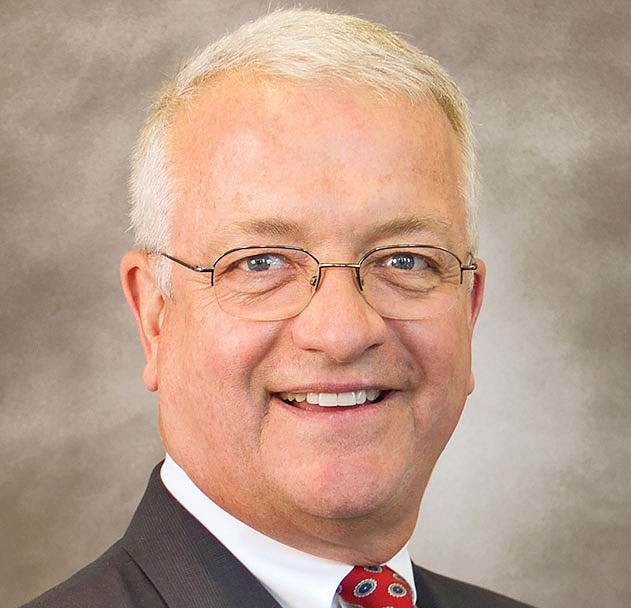- November 24, 2024
-
-
Loading

Loading

Jeffrey Gage has worked for commercial real estate brokerage and services firm CBRE Group since 1985, and spent many years in its Stamford, Conn. office. Today, he is a senior vice president and in charge of the company's Naples operation, which serves Southwest Florida. Throughout his career, Gage has negotiated sale or lease transactions involving in excess of 8.5 million square feet, deals that have also carried a market value of more than $2 billion.
What's the state of the Southwest Florida commercial real estate market from your perspective? How would you describe it at present?
There are a couple of interesting things we're noticing currently. CBRE specializes in connecting global capital to local markets, and what we're finding is that investors are looking increasingly for emerging markets like Southwest Florida, and it makes sense: Wages are growing, population is growing, and when you compare the region to the rest of Florida, the Southwest portion of the state has a lot of attractive attributes. For instance, the workforce here is growing by a little less than 4%. Well, in Connecticut, where I came from, the workforce is actually on the decline. Those are some of the fundamentals that attract global capital.
We're finding offshore or institutional investors who typically don't look to secondary or tertiary markets are now looking closer at Southwest Florida. And that's a big change: The region has traditionally been known primarily for leisure, but now there's a growing tech sector and a retail corporate presence that was never here before. Companies like Gartner, Arthrex, Chico's — they all attract capital from REITs and other large shops that want to invest and be part of the success.
Are there geographic areas within the submarket there that you believe are more robust than others?
Collier County has a smaller population than Lee County, so by the nature of that there's more volume in Lee County, what with companies like Gartner, which I mentioned, and Lee Health, both are growing a lot. Collier, however, contains more wealth and supports a higher wage, on average, and the demographics are, generally, stronger there. As a result we see spots of peak investment in Collier, because the numbers are higher.
Are there sectors that are performing better than others in your mind?
Central business districts are always hot spots, and that's remained the case in Southwest Florida. In downtown Naples, for instance, we're seeing values in excess of $1,000 per square foot. From a pricing perspective, core markets tend to always perform better than more ancillary ones, but the truth is we're seeing good strong and steady growth everywhere throughout the region.
You just touched on it, but lets drill down a bit further. What about from a pure investment perspective? There's anecdotal evidence that cap rates have begun inching upward in 2018. Are you seeing that in Southwest Florida as well?
From an investment side, the trend is that prices are bumping up against replacement costs in many places. That means that pretty soon we'll likely see new construction among various sectors. For instance, if an office building costs, say, $200 per square foot to buy, and rents rise to a level that an investor could build a similar product for roughly the same amount, they'll come out of the ground with a new building to compete and try and steal tenants or attract new ones to the market.
But as of now, we're not seeing new development other than that being occupied by end users. Still, that's a good sign, because it means that big companies, especially, aren't finding existing space to meet their needs. So if that same company requires 100,000 square feet and there are no new existing blocks to meet that, then they have one of two choices: Build a new building or convince a developer to build it on their behalf. So build-to-suit projects are certainly being conceived, but there's no new speculative construction because the rental structure doesn't support that at the present.
Even there, though, the market will eventually morph because we're experiencing good, positive absorption across all sectors. Vacancy rates are down and there's virtually no new product, so sooner or later, new construction is the only alternative.
Southwest Florida is widely regarded as one of the hottest commercial real estate markets in the state, but in terms of new development, are you seeing evidence on the ground, or is a lot of the momentum still conceptual?
Especially on the office side, rents have not risen enough to a place to justify new construction. There are sites, however, that are entitled and ready to go. On the multifamily side, people are certainly turning to new construction to meet the overall housing need. Millenials and a lot of the composition of the workforce here are showing demand for apartment complexes with modern amenities. And we've had recent trades north of $200,000 a door, and one can certainly build a new complex for less than that, so we're seeing new construction competing with existing product.
What's your forecast for the Southwest Florida commercial real estate market for the balance of 2018, and why?
I think things are going to be very positive. Many investors who took considerable risk coming out of 2009 are cashing out, taking advantage of pent-up capital, reduced cap rates and values higher than they have even been, in many cases. And as I indicated before, we're bumping up against rents that justify new construction. With population and job growth maintaining a steady pace, none of the fundamentals today suggest anything but great things for Southwest Florida in the year ahead.